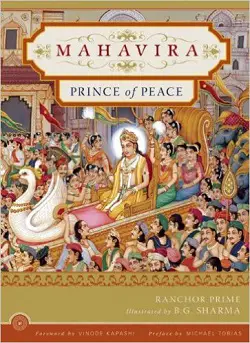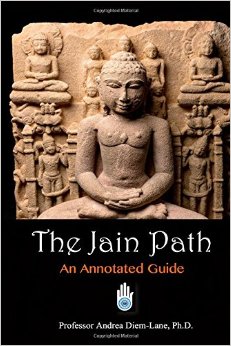|
TRANSLATE THIS ARTICLE
Integral World: Exploring Theories of Everything
An independent forum for a critical discussion of the integral philosophy of Ken Wilber
 Andrea Diem-Lane is a tenured Professor of Philosophy at Mt. San Antonio College, where she has been teaching since 1991. Professor Diem has published several scholarly books and articles, including The Gnostic Mystery and When Gods Decay. She is married to Dr. David Lane, with whom she has two children, Shaun-Michael and Kelly-Joseph. Andrea Diem-Lane is a tenured Professor of Philosophy at Mt. San Antonio College, where she has been teaching since 1991. Professor Diem has published several scholarly books and articles, including The Gnostic Mystery and When Gods Decay. She is married to Dr. David Lane, with whom she has two children, Shaun-Michael and Kelly-Joseph. The Life of MahaviraJainism and the Path of AhimsaAndrea Diem-LaneMahavira: The Prince of Peace written by the global environmentalist Ranchor Prime and beautifully illustrated by B.G. Sharma is a magnificent pictorial biography of this Jain Tirthankara. Though not academic in the traditional sense it is such a delight to read. Through both poetic words and enchanting images of the life stages and teachings of this great saint, the reader is transported into a mythical world, where the gods descend to intervene on his behalf and negative forces try to test his forbearance. Mahavira time and time again rises to the occasion and shows us what a noble character is all about. The writer's intention may not have been to historically document the life of Mahavira but it seems he was trying to invoke a sense of awe for what Mahavira represents. This wealthy prince who turned ascetic and gave everything away exemplifies grace, compassion, tolerance and a gentle disposition. Unlike most texts which catalogs the history and hagiography of Mahavira, this one taps more into the childlike imagination of the reader where anything is possible. The book reads like a fairytale about a hero on a journey to enlightenment. On the adventure, the hero encounters false heroes (such as Gosalaka), magical helpers (such as Indra), and villians (such as a charlatan astrologer and various demons). One can witness the classic structure of the hero myth delineated by the mythologist Joseph Campbell. The story ends, says Campbell, with the hero transformed and that is what we see with Mahavira. Though his path to enlightenment seemed predestined with a remarkable birth account (his embryo was transported with the help of Indra from a Brahmin woman, Devananda, to a Kshatriya woman, Trisala), Mahavira's personal struggles through-out his long life demonstrate that the hero's odyssey is an arduous one. On his quest for higher truth he engaged in very challenging practices, such as strict fasts with no food or water. In the reading stories are told about how Mahavira fasted once for 6 months straight and at another time for 5 months and 25 days. To break one of his fasts and accept an offering he set up some unusual requirements. The one offering the food must offer boiled beans in a simple wicker basket, be a former princesses being held captive whose hair was cut short, who had been chained, and who had not herself eating in 3 days. Upon the offering she must be standing in a threshold with tears in her eyes. And very strangely, while on a long fast for many months, he found such a situation where all of the conditions were met. Mahavira's laborious expedition even entailed torture by onlookers who did not understand what he was doing as he meditated on the side of the road. There is one story of a sadistic farmer who pounded sharped stick-like roots into Mahavira's ears and others who mocked him or tried to beat him. Various accounts of demons or evil spirits tormenting this teacher are also mentioned. One of the demonic beings was actually an ex-wife from his previous life as a nobleman named Triprustha. She for some reason was angry at her past husband, and so appeared to him as the evil spirit Kataputana who sent down a torrent of freezing rain upon him. When seeing his patience, resolve, and compassion her heart was soften and she begged for forgiveness. Many accounts follow this same structure of confrontation and then remorse and resolution. However, in the reading there is a narrative where forgiveness was not sought. When Mahavira lived as Triprustha in his previous life, he had killed a lion with arrows that had wondered in from the jungle into his village. In seeking revenge the spirit of this lion caused a great storm as Mahavira crossed the Ganges River on a ship with fellow passengers. While the Jain leader remained very calm and fearless, guarding spirits intervened to prevent a disaster. This lion spirit later took the form of a man and when he encountered Mahavira he turned and immediately fled the scene. When Mahavira's student asked why the man left so abruptly the Jain teacher explained the story of the lion and how our past lives and actions create such an impression on the soul. He added that the way to overcome these feelings is through cultivating love and compassion. Though the fanciful stories seem to be religiously enhanced and unacceptable for the modern mind to embrace at face value, as one reads this book one is inspired to live a better life. It is not about the historicity of these accounts that seem to matter here but about the nobility of character that shines forth. Mahvira radiated compassion for all beings, large or small, and harbored no resentment for those trying to do harm to him. Expanding “the circle of compassion” is truly a prescription for happiness, he taught. Moreover, Mahavira seemed unmoved by the vicissitudes of daily life and took everything in stride. This teacher's patience and kindness is a model for all to follow. The hero story of the prince of peace touches the heart and enlivens the imagination. When Michael Tobias in his preface to the book writes that “I am trying to be a Jain, just as I am trying to be a human being” he touches upon the whole theme of Mahavira's life--the call to do better.
|

